The prince of mushrooms, Agaricus augustus, is one of the easiest mushrooms to identify due to one very sweet and wonderful characteristic: it smells like almond extract. And the smell isn’t withholding — it is a robust marzipan-like scent. The prince agaricus is a fun mushroom to forage!
Prince mushrooms are very choice, with a tremendous mushroomy flavor and dense texture. The prince primarily grows in the Pacific Northwest.
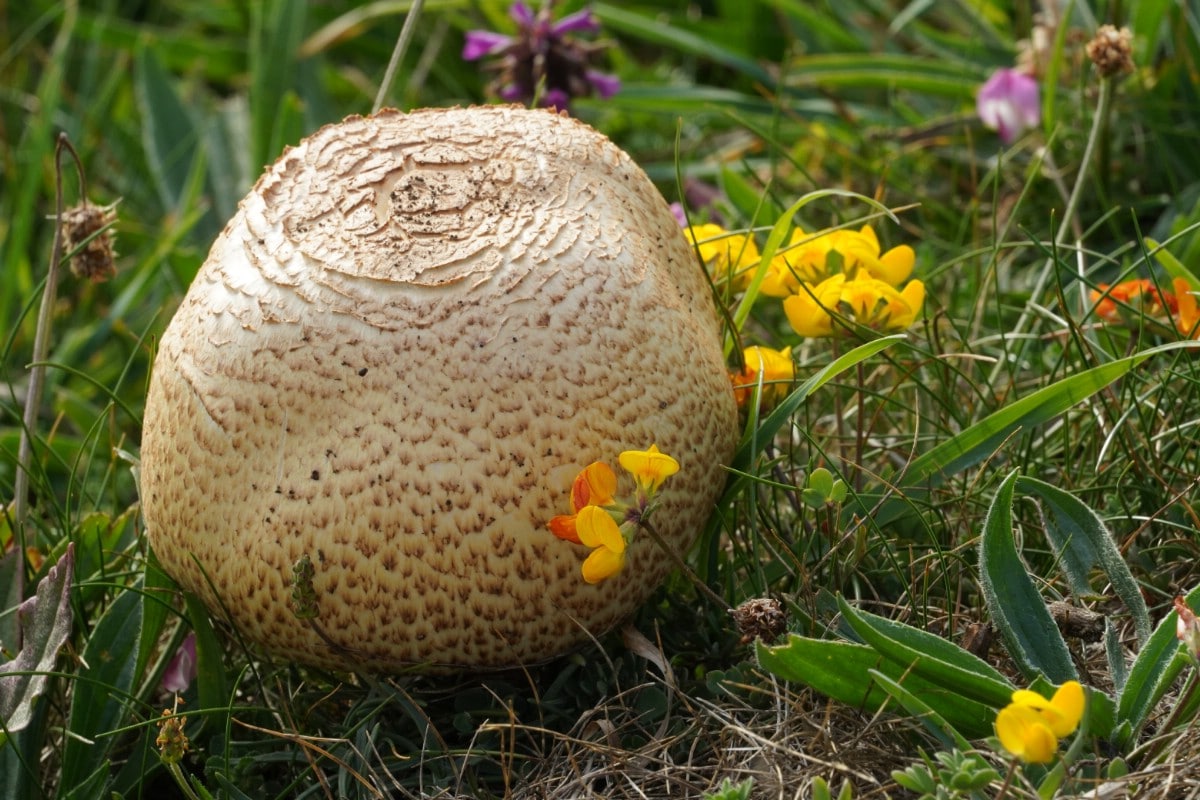
Interestingly, the prince isn’t the only fungi with an almond scent. There are some lookalikes, but none of them are poisonous. Thankfully, there isn’t a huge risk foraging this fine prince of the forest.
Unfortunately, even though identifying them is pretty straightforward, they are pretty tricky to find. Prince mushrooms are elusive, maybe even a little shy. But, if you know when to look and what habitat they prefer, your chances of finding this royal edible increase significantly.
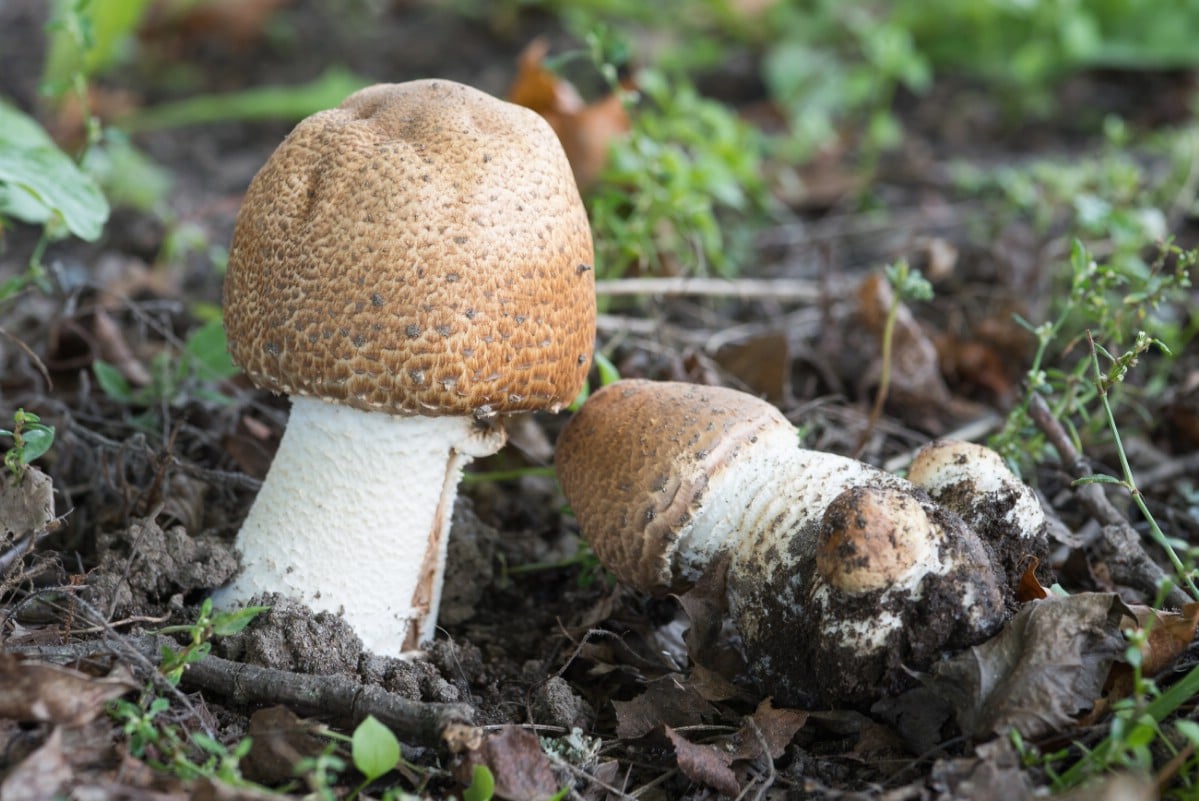
Jump to:
All About The Prince of Mushrooms
The prince mushroom is a member of the Agaricus genus. This is the genus of button mushrooms, portabellos, and crimini (fun fact: those three I just named are all the same species, Agaricus bisporus). When you see the prince, you’ll see the resemblance. If it wasn’t for the almond scent, you might think you’ve found a portobello.
Agaricus mushrooms grow worldwide; there are 300 known species, with 100 or more appearing in North America. New species are still being discovered. Agaricus is one of the most well-known species due to its preference for growing on disturbed land like pastures, trails, and roadsides. The fungi in this genus often fruit around human-influenced areas.
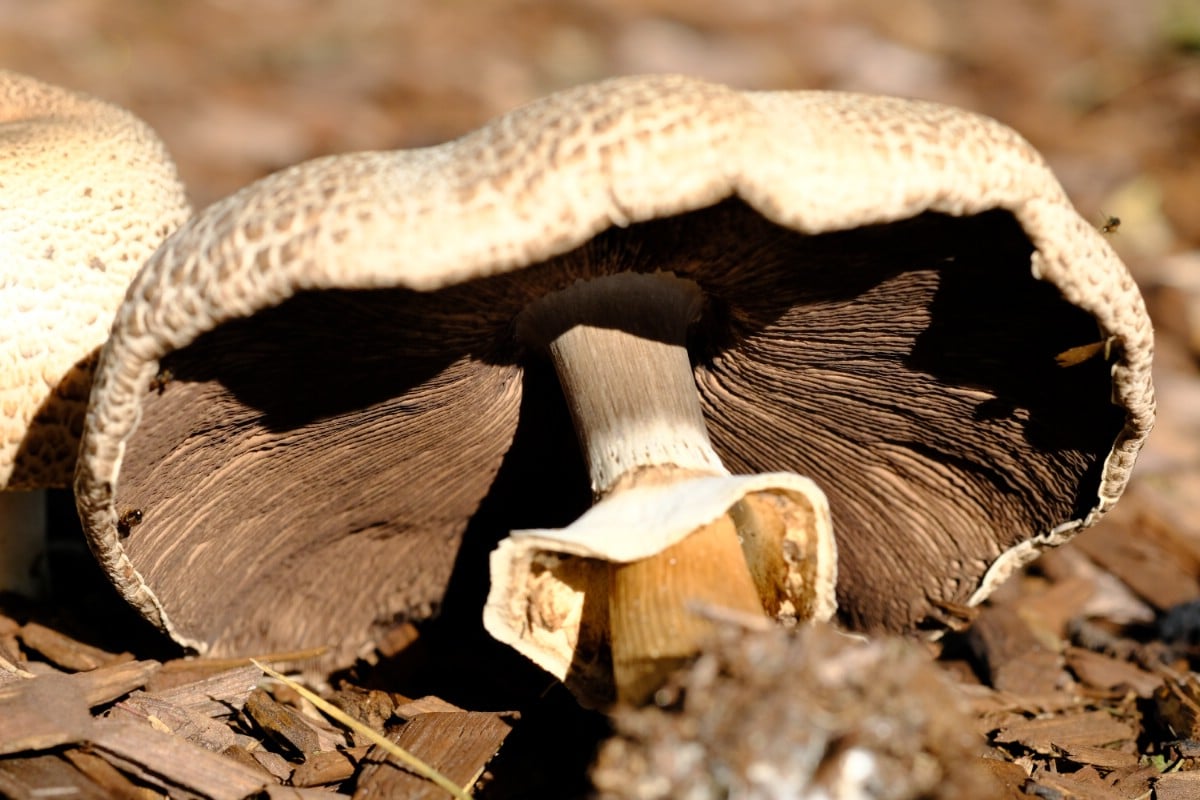
The prince agaricus is like this, too. It grows with conifer trees but not usually in the woods. It will appear around the edge of conifer growth, preferring to fruit along paths, gardens, roads, and parks.
Prince agaricus is saprotrophic, which means it takes nutrients from dead or decaying material. They will only grow where they have adequate nutrients to live on.
Prince Mushroom Edibility
Prince agaricus mushrooms are a prized edible species. Mature specimens of the prince are enormous, bigger than portabellos. They are excellent in any dish you’d use portabellos, providing that same meaty texture and rich flavor.
They don’t retain much of the almond scent during cooking. Their taste isn’t super distinctive, but it is wonderful – it is mushroom-like and similar to the taste of portobello or button mushrooms.
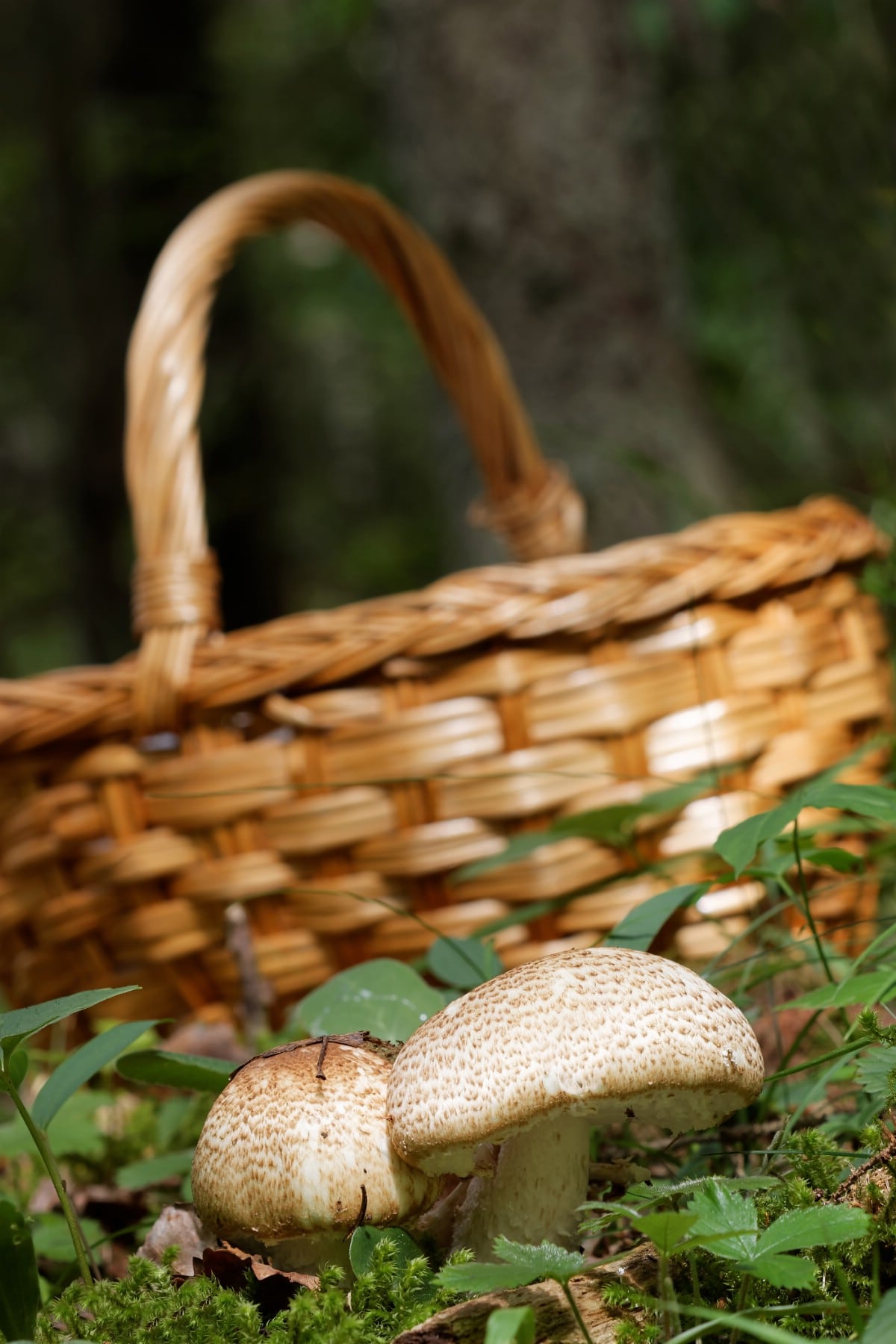
Where Does The Prince Mushroom Grow?
Princes are widespread throughout Europe, western North America, Asia, and North Africa. In Europe, it appears in late summer and fall, but in the Pacific Northwest, it is a winter and spring mushroom.
Foraging The Prince Agaricus Mushroom
Season
Prince mushrooms like warmth and moisture. They appear from May through September in the Pacific Northwest. During mild years, they may emerge in October, too. September seems to be the prime fruiting time when it is still pretty warm during the day, but the nights are cool. The prince doesn’t seem to like blazing hot conditions.
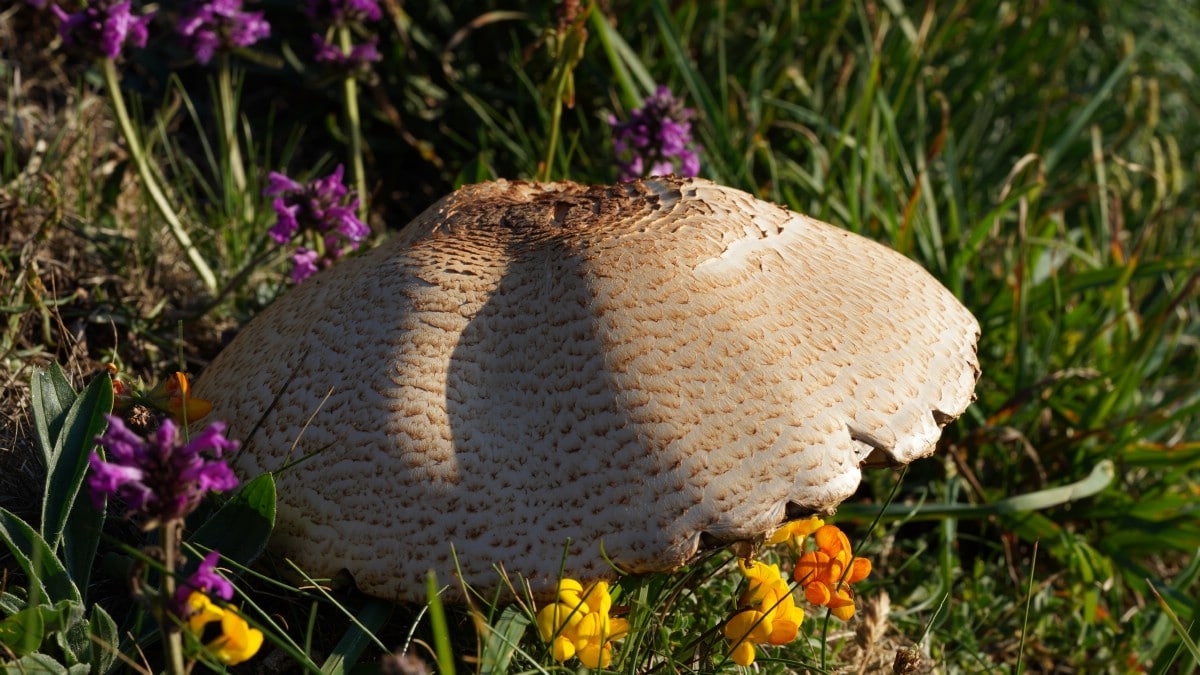
Most patches will fruit two times a year, once in the late spring and then again in early summer to late fall. If you find a patch, make sure you mark its location for future foraging!
Habitat
The prince grows under or around conifer trees, but it rarely is found in the forest. It emerges on the forest edge, along roads, in parks, and places with conifers and plentiful sun. The fruiting princes grow in scattered clusters, usually individually or in pairs. Sometimes, they grow in dense groupings.
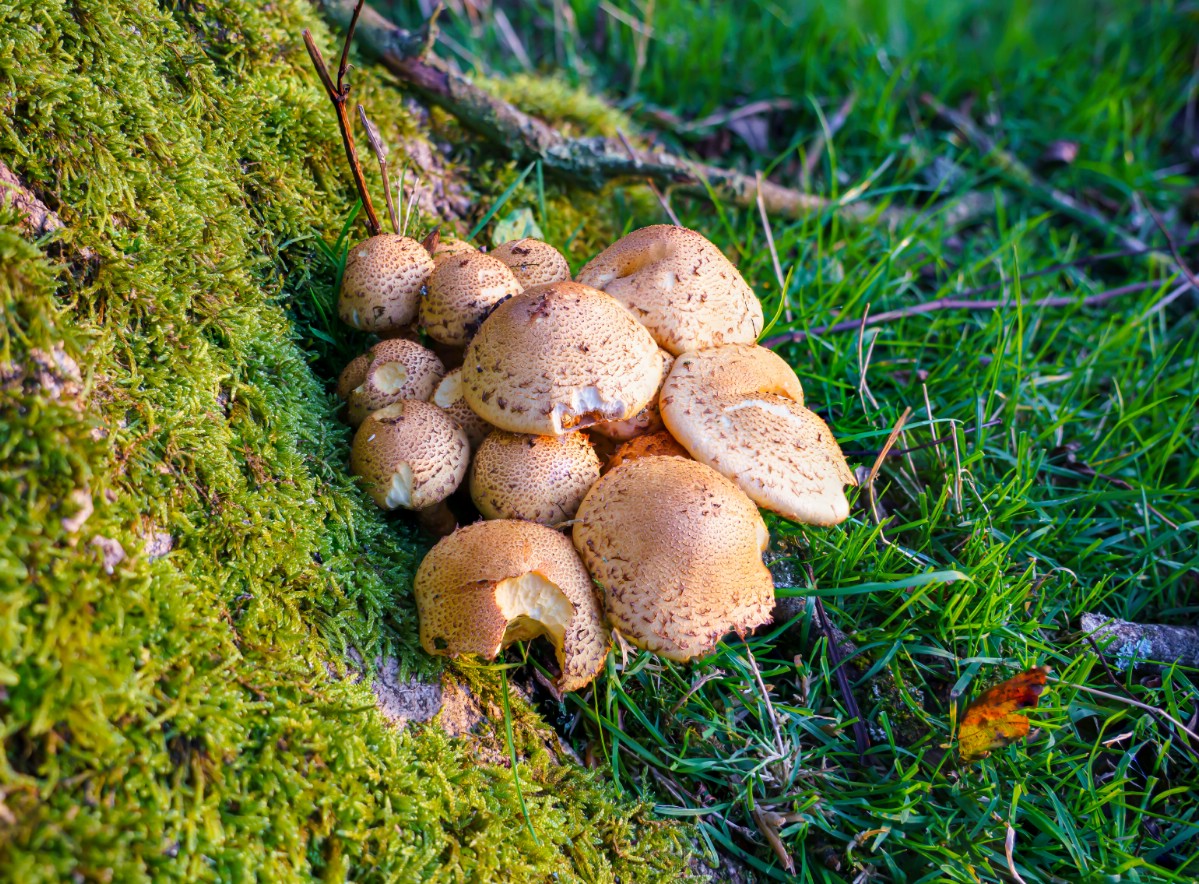
Princes frequently grow in man-made environments – this is one you don’t have to go trekking in the woods to find. Local woods, parks, walkways, mulched areas, and small patches of city or suburban land are the best places to look. There just has to be a conifer around. Like with most mushrooms, the biggest problem is getting to the mushrooms before the worms and bugs move in.
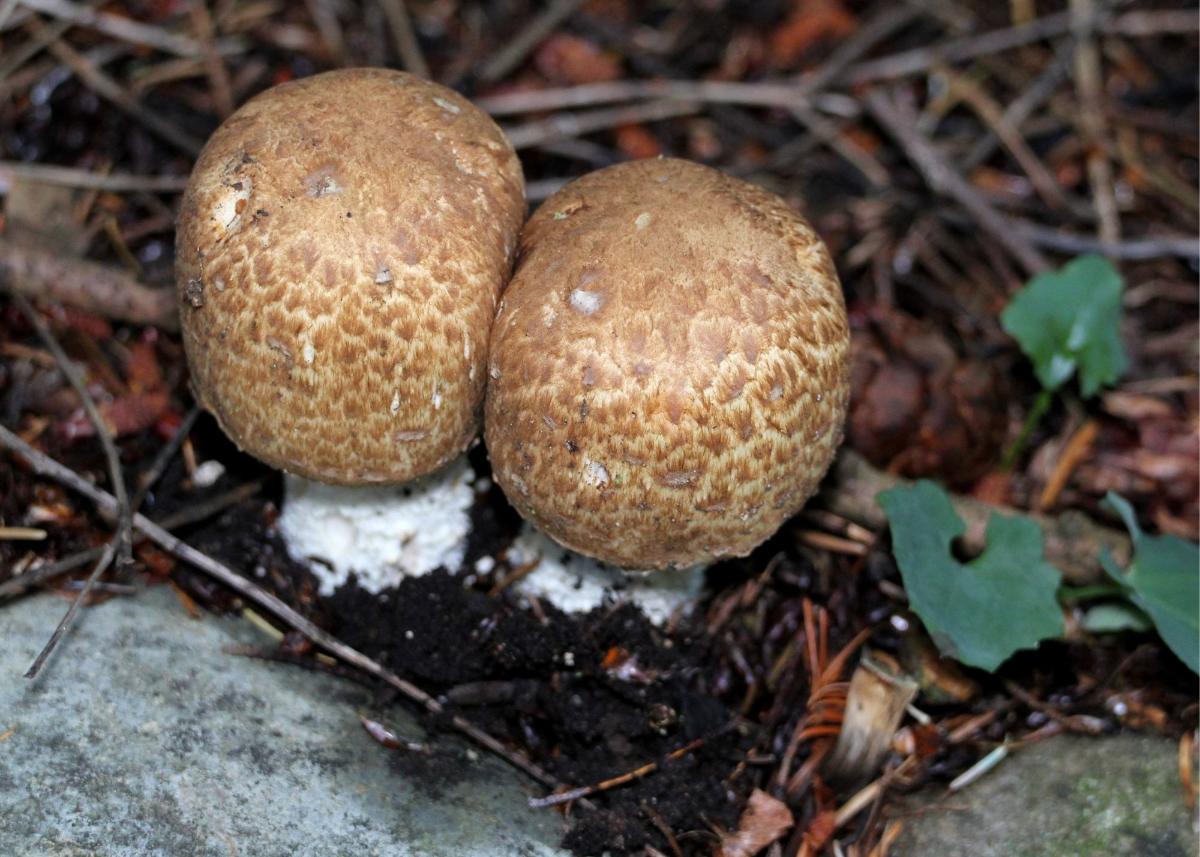
Fruiting princes grow from the soil, so they are always on the ground. However, since they gather nutrients from decaying material, it may look like they are fruiting from dead logs or decaying wood. But, if you look closer, you can see the stem is firmly in the ground. Prince agaricus mushrooms never grow from trees.
Identification
When first emerging from the ground, prince caps are blockish, not round like most mushrooms. As they mature, they become rounded and usually flatten out.
The caps are 3-14 inches wide and white with a dense covering of yellow-brown or dark brown scales. In the center of the cap is a wide brown spot, and the scales radiate out circularly from it. When handled, the edges of the cap bruise yellow or orangish-yellow.
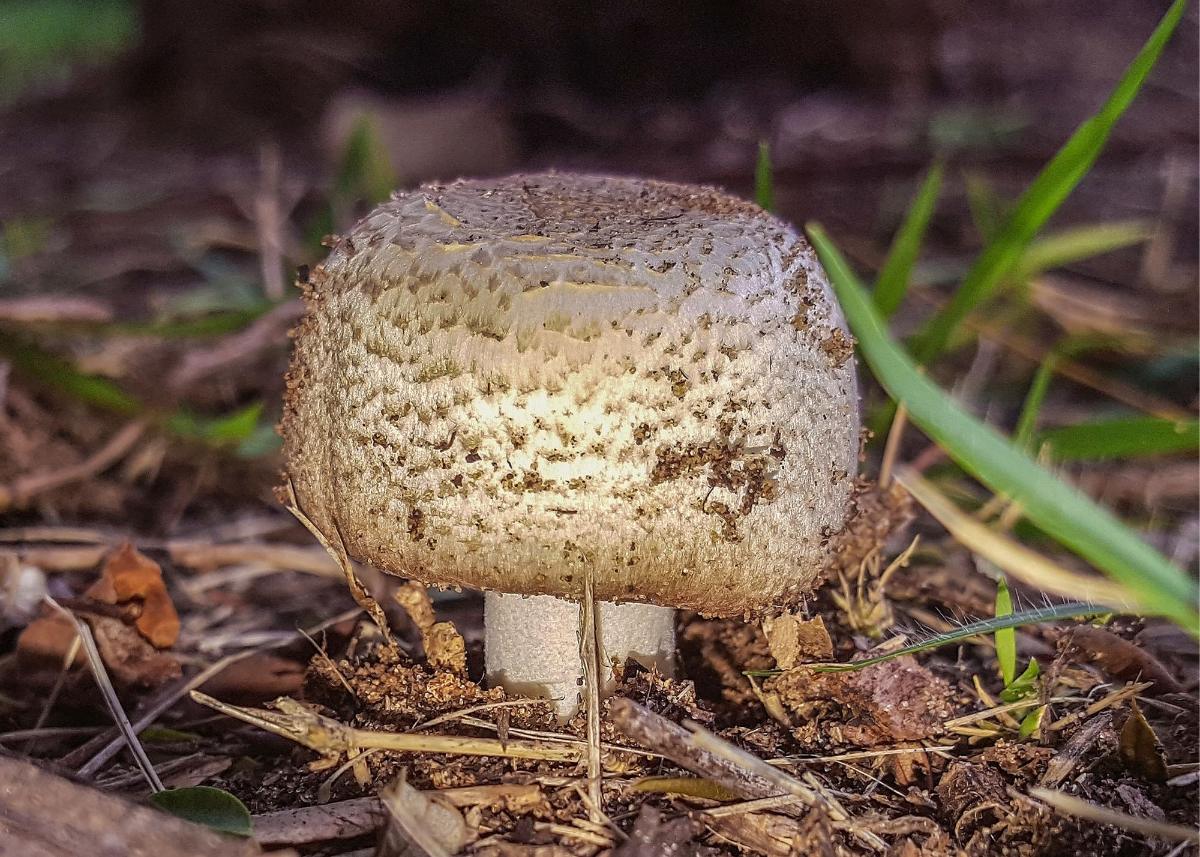
The gills start out white, then turn gray, and finally dark chocolate brown to black. They are very close or crowded, and they are not attached to the stem. A thick white veil obscures the gills in the button stage. The veil is a white stretchy membrane that grows underneath the cap. On the veil are brownish scales that match the scales on the cap.
As the veil breaks and separates from the cap, it usually leaves behind papery remnants that dot the margin of the cap. The little white dangling pieces look like delicate decorations. Not all princes have this decoration — it depends on how the veil separates.
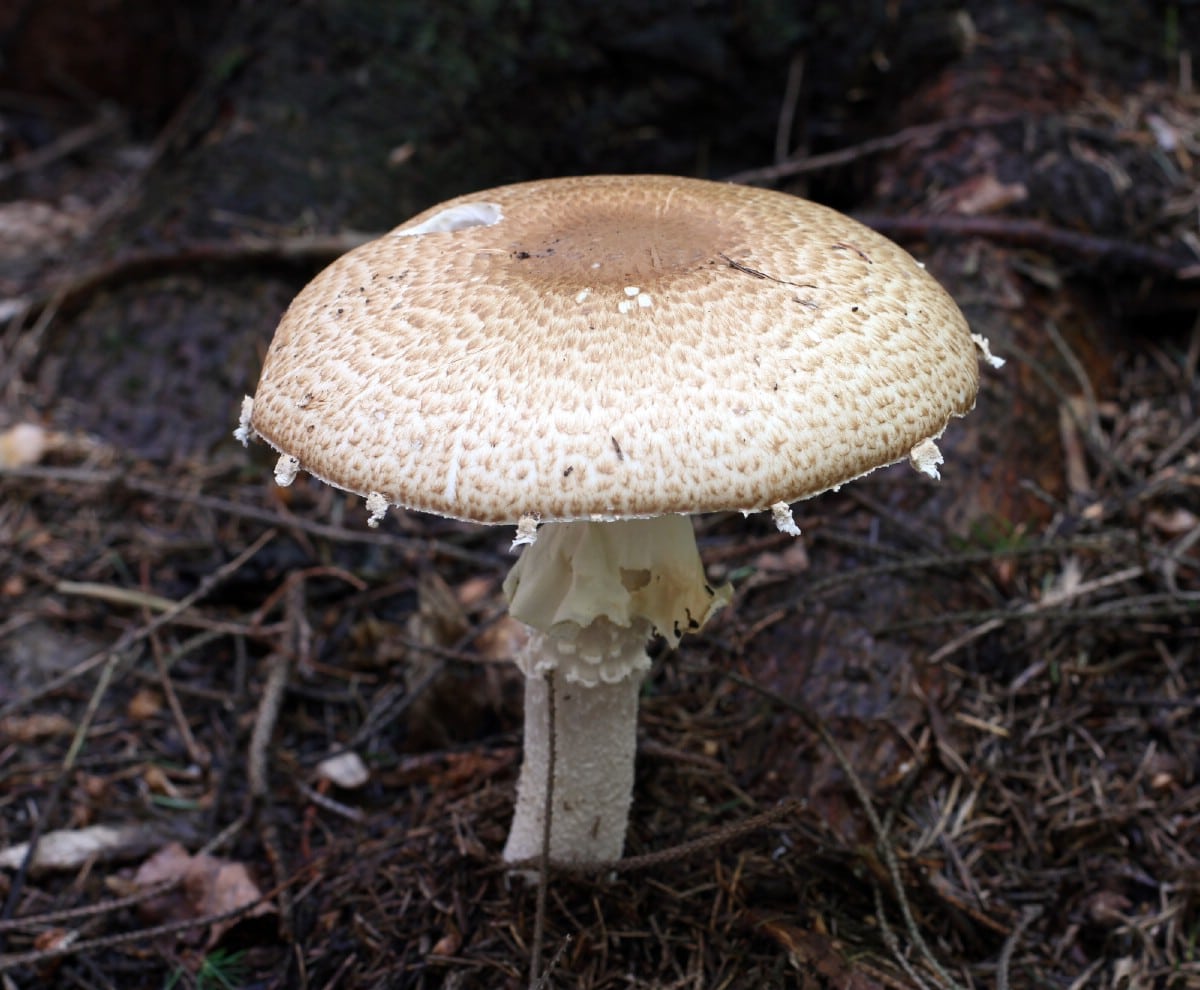
The prince mushroom’s stem is white and usually covered with white or very light brown scales. It is 4-12 inches long, thick, straight, and usually equal the entire length. About a quarter way down the stem is a hanging white fibrous ring – this is the remnants of the veil. It looks like a white mini skirt (or kilt) circling the stem. Above the ring, the white stem has no scales or markings.
The stem flesh is white, thick, and sometimes has a slender hollow in the center. Prince stems extend down into the soil – they are hardy, robust mushrooms. There is no volva around the stem base – this is important as it is what differentiates Agaricus species from toxic Amanitas. A volva is a girdle of white material cupping the base of the stem.
Prince agaricus flesh is white and does not stain when it is cut. It is substantial and dense.
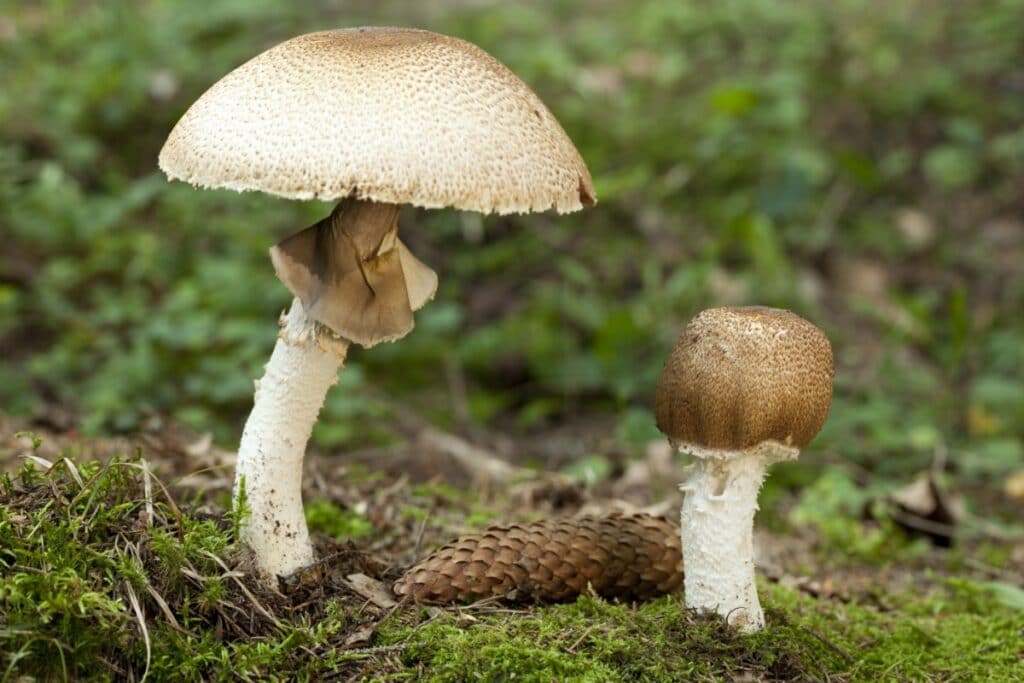
The spore print is dark chocolate brown.
The smell of the prince mushroom, as mentioned before, is very distinctive. Many guides say the smell is of almonds, but this isn’t entirely accurate. The smell of almonds isn’t that strong – if you go smell a jar of almonds, you probably won’t notice much.
When mushroom texts mention an almond scent, they mean a concentrated almond smell, which is more like almond extract. It is the smell of marzipan, with a hint of cherries or anise. If you don’t know what almond extract smells like, you should get some. It will significantly improve your foraging abilities!
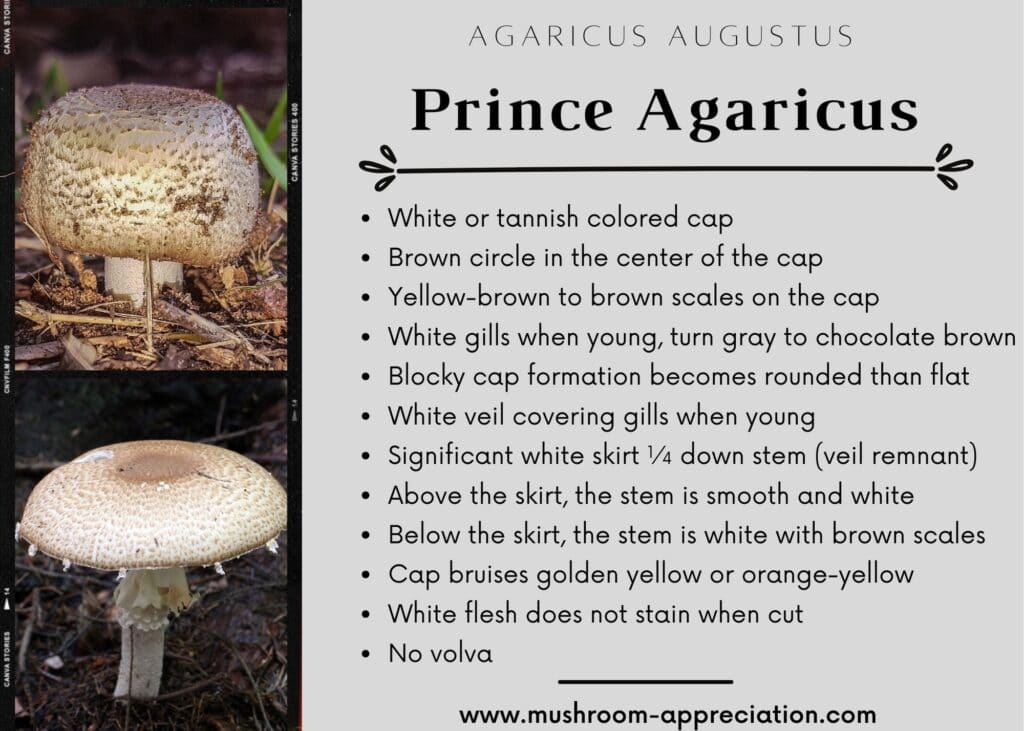
On The Lookout
When walking or driving around, look for large light-colored mushrooms near conifer trees. They’re usually quite noticeable due to their size and blocky growth when young – buttons are often the size of tennis balls, making them stand out in the grass. Little parks in your neighborhood, any disturbed areas, or planted landscapes are possibilities. Any suburban or urban environment is prime for finding the prince agaricus.
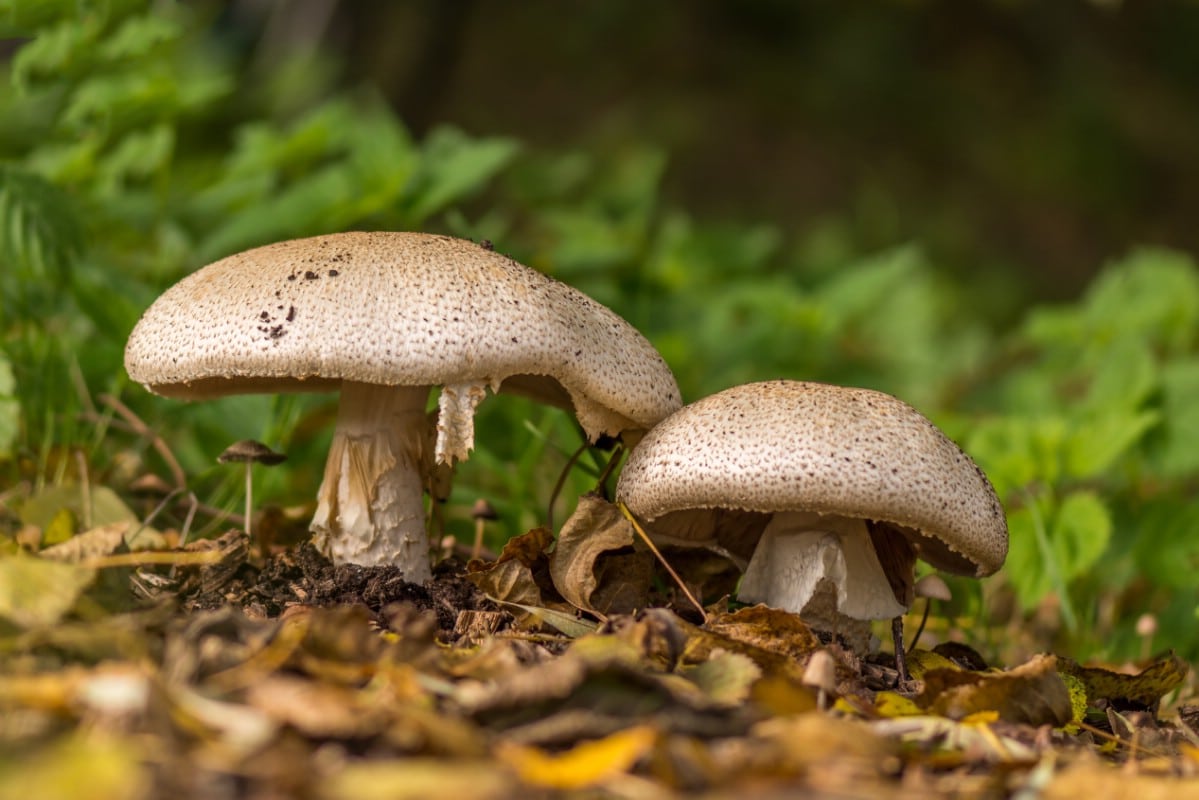
The prince will be in the grass or leaf litter around the tree. If you see one, always check for more since they like to grow in scattered groupings. The prince agaricus is fun to “car-forage,” though it’s better if you’re the passenger on this one. When you see conifers alongside the road, keep an eye out for the prince.
Harvesting Prince Agaricus
Cut off the stem of the prince at the base. You can try gently pulling it up from the ground, but the stem is usually pretty long and submerged in the soil. The bottom of the stem will be covered in dirt when you pull it up.
Young princes are the best foraging, before their caps expand outwards. They’re also more likely not to be bug-infested at this young stage – a common problem with older specimens. The younger princes have a better texture and cook up nicer.
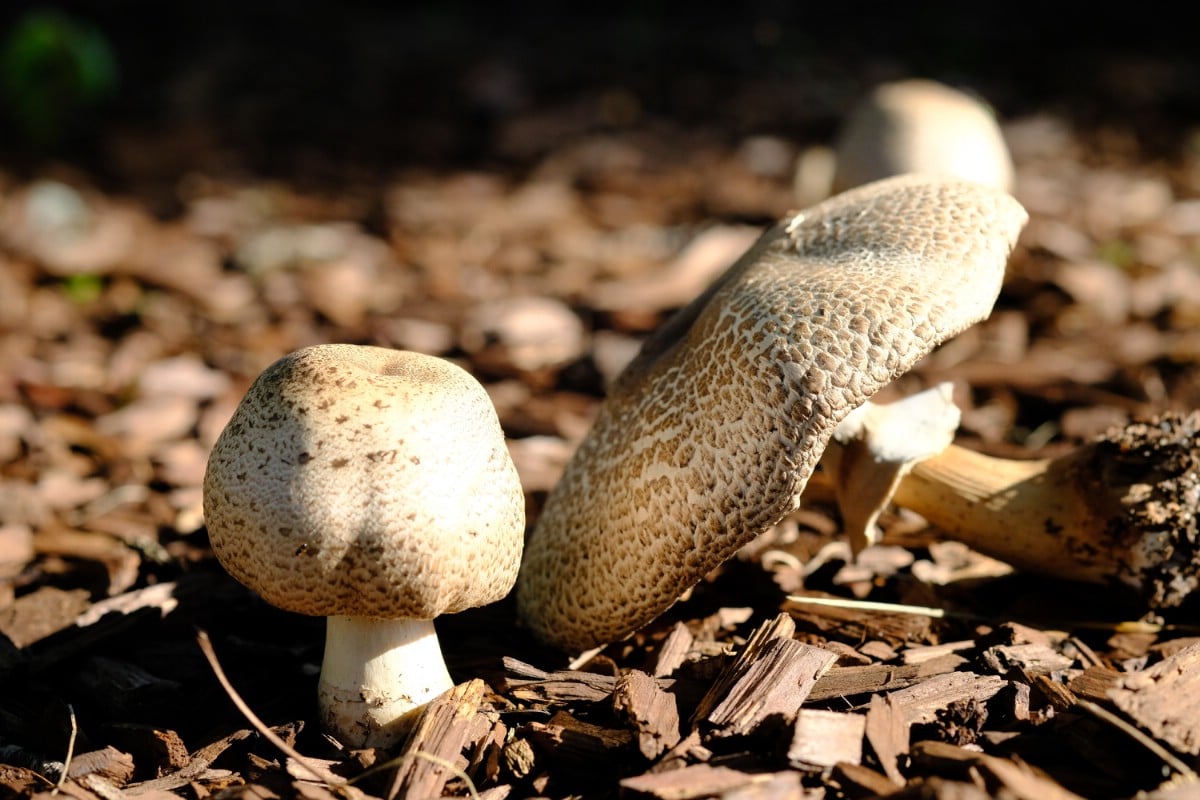
Cooking With The Prince Agaricus
Use prince agaricus mushrooms anywhere you would use button mushrooms or portabellos.
- Fried with butter and salt
- Grilled
- Barbecued with just olive oil and salt or with BBQ sauce
- Risotto
- Added to pasta sauce (tomato or cream-based)
- On pizza
- Mushroom pot pie
- Stirfries
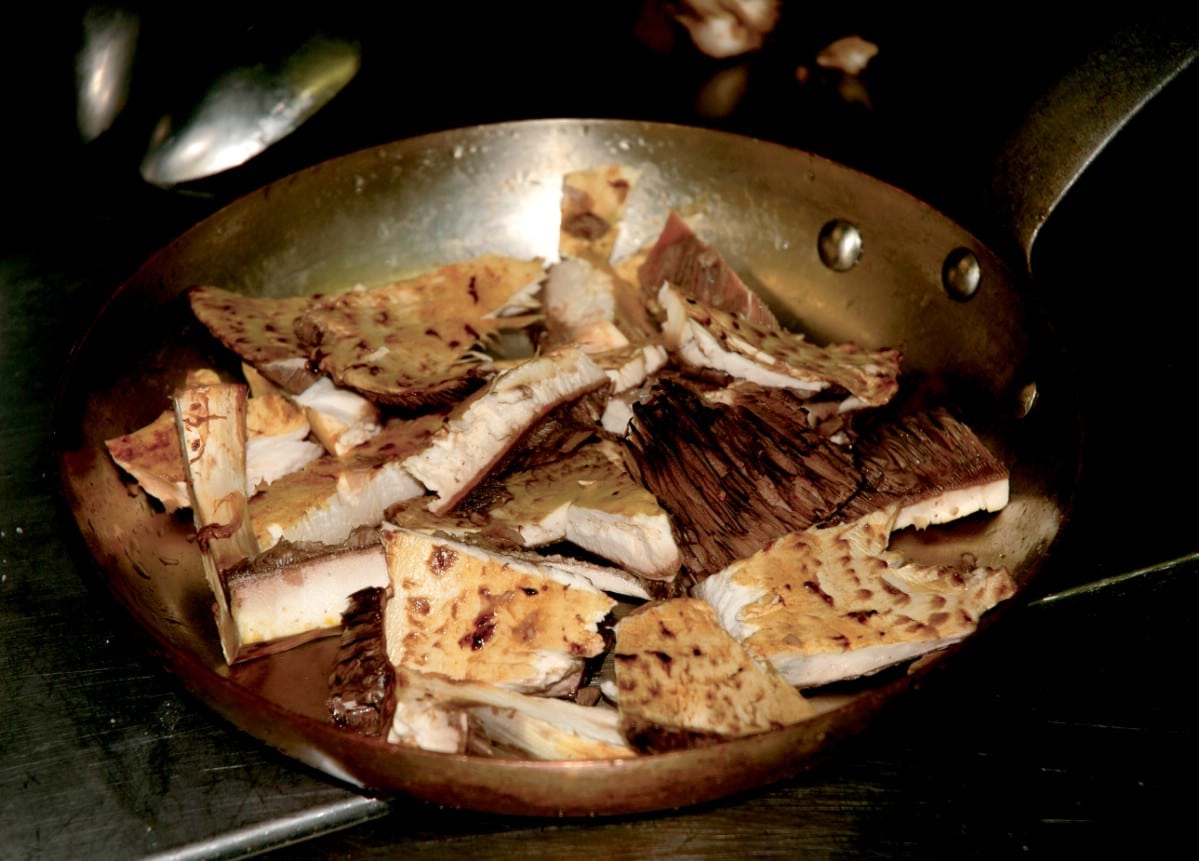
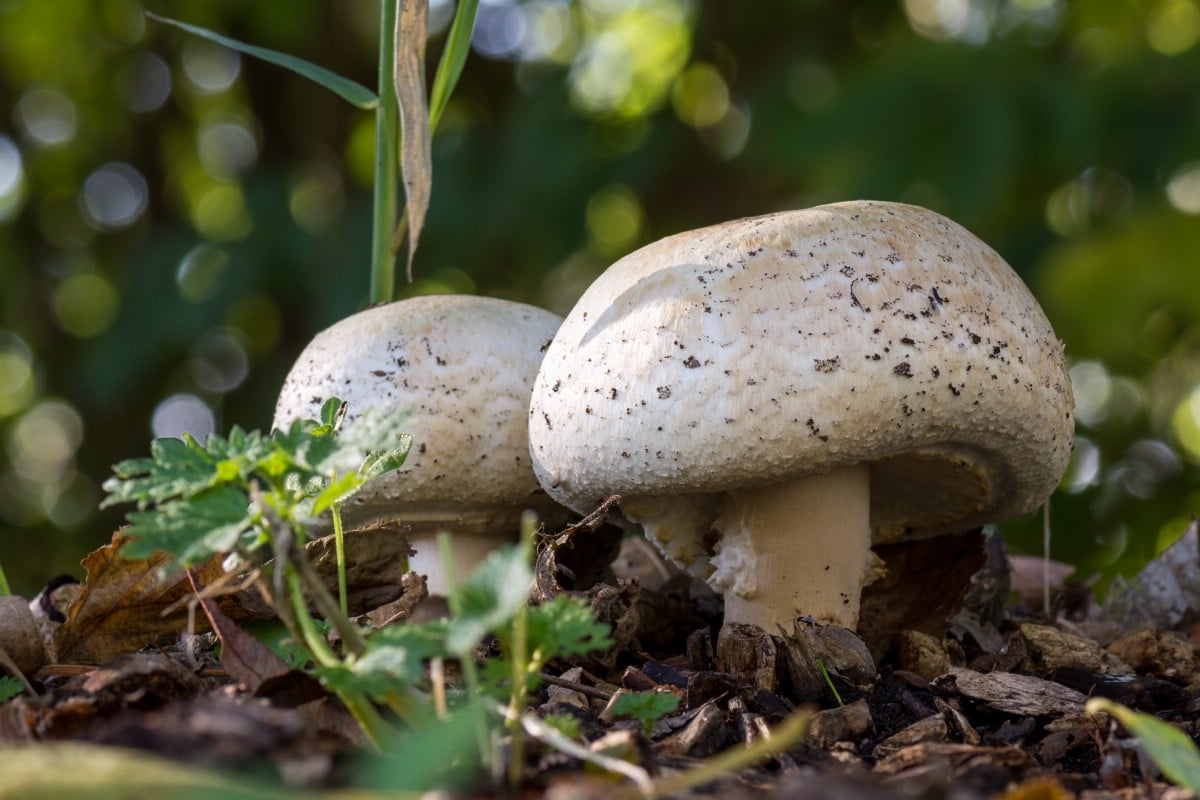
Sister Species
Agaricus nanaugustus
As you can probably tell by the name, this mushroom is “like A. augustus but isn’t it.” A. nanaugustus is reported from the east coast and Arizona and may be a version of the prince. However, there aren’t a lot of specimens to compare, so this one is still being figured out.
The A. nanaugustus mushroom is smaller, has more orange-brown coloring than the prince, and has smaller scales and pores. To the naked eye, all this can be difficult to pick out. It is a fine edible, just like the prince agaricus, so there’s no harm if it is mistaken for its royal relative.
In summer and fall, this prince-like mushroom grows with Norway spruce, blue spruce, and oaks.
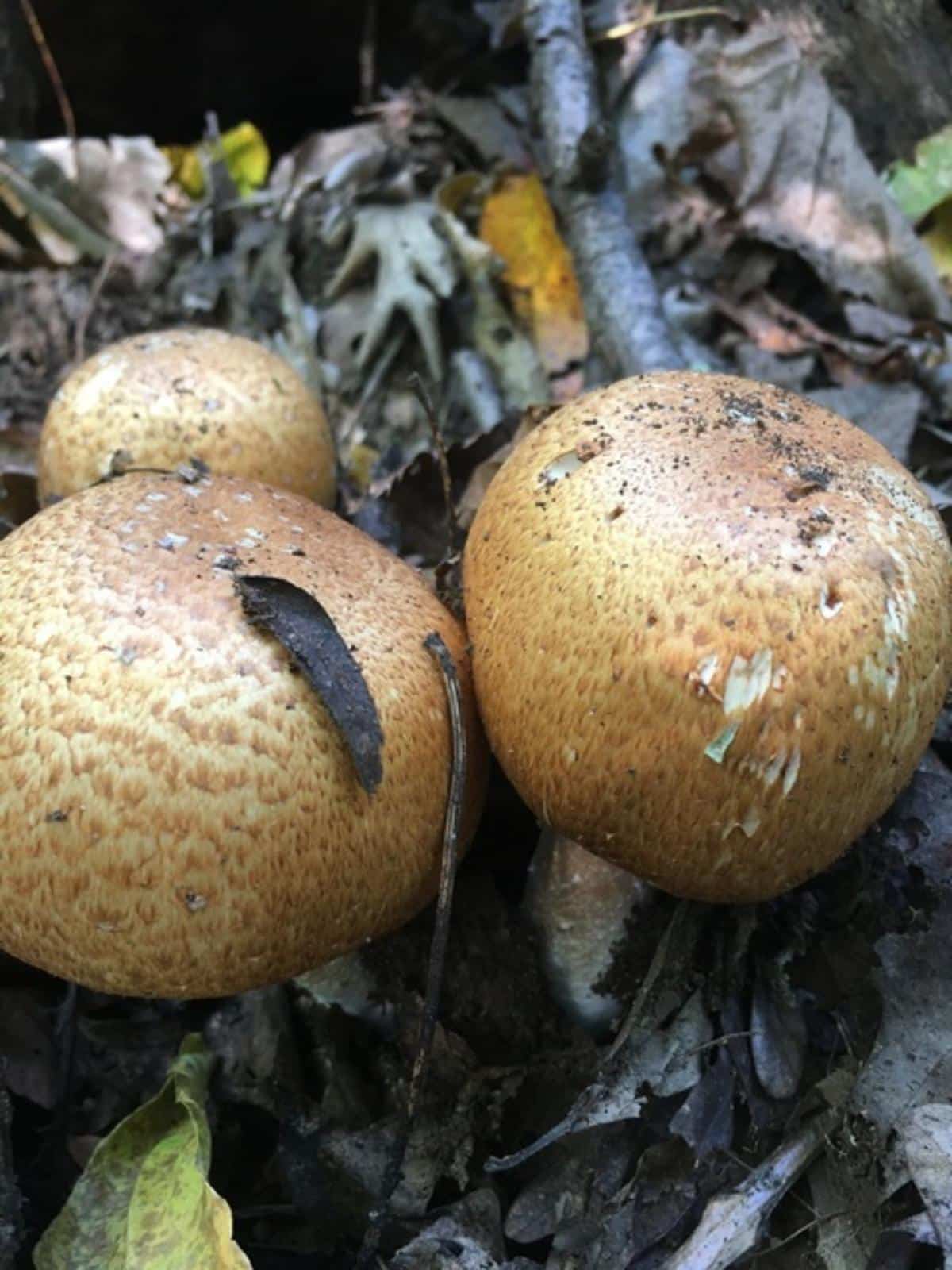
Agaricus julius
This species is the Rocky Mountains version of the prince agaricus. It looks almost identical, except for where it grows. A. julius fruits in high elevation fir and spruce forests. The cap on this species is also more rounded than the prince, and the brown scales on the cap are darker and more pronounced.
Foragers have long identified this Agaricus as A. augustus, harvesting it and eating it the same. It has the same distinctive scent, general size, and growth habit. A. julius is basically the twin of the prince.
Agaricus subrufescens – The Almond Mushroom
This related species is known as the almond mushroom, God’s mushroom, and the royal sun Agaricus. It looks pretty identical to A. augustus, including the distinctive almond concentrated scent, which is even more intense with A. subrufescens. Distinguishing them isn’t easy – usually, if the mushroom is on the east coast, it is A. subrufescens, and if it is on the west coast, it is A. augustus. This is by no means 100% accurate, but at least a good starting point.
Luckily, the almond mushroom is also a prized edible, so you can harvest it freely when you’re foraging. Most reports of the A. subrufescens are from northeastern North America. It also occurs in Brazil, the Philippines, Great Britain, the Netherlands, Iran, Australia, and Taiwan.
The main difference in appearance between these two is that the almond mushroom is usually smaller and has more of a yellow tone. Oddly, cultivated versions of the A. subrufescens don’t always have the brown speckled cap; instead they are brown or grayish and smooth.
Fun Fact: Agaricus subrufescens was widely cultivated in the 1900s but was replaced by the blander less-aromatic A. bisporus (the common button mushroom). The reasons for this are unknown – maybe some folks objected to the almond extract scent.
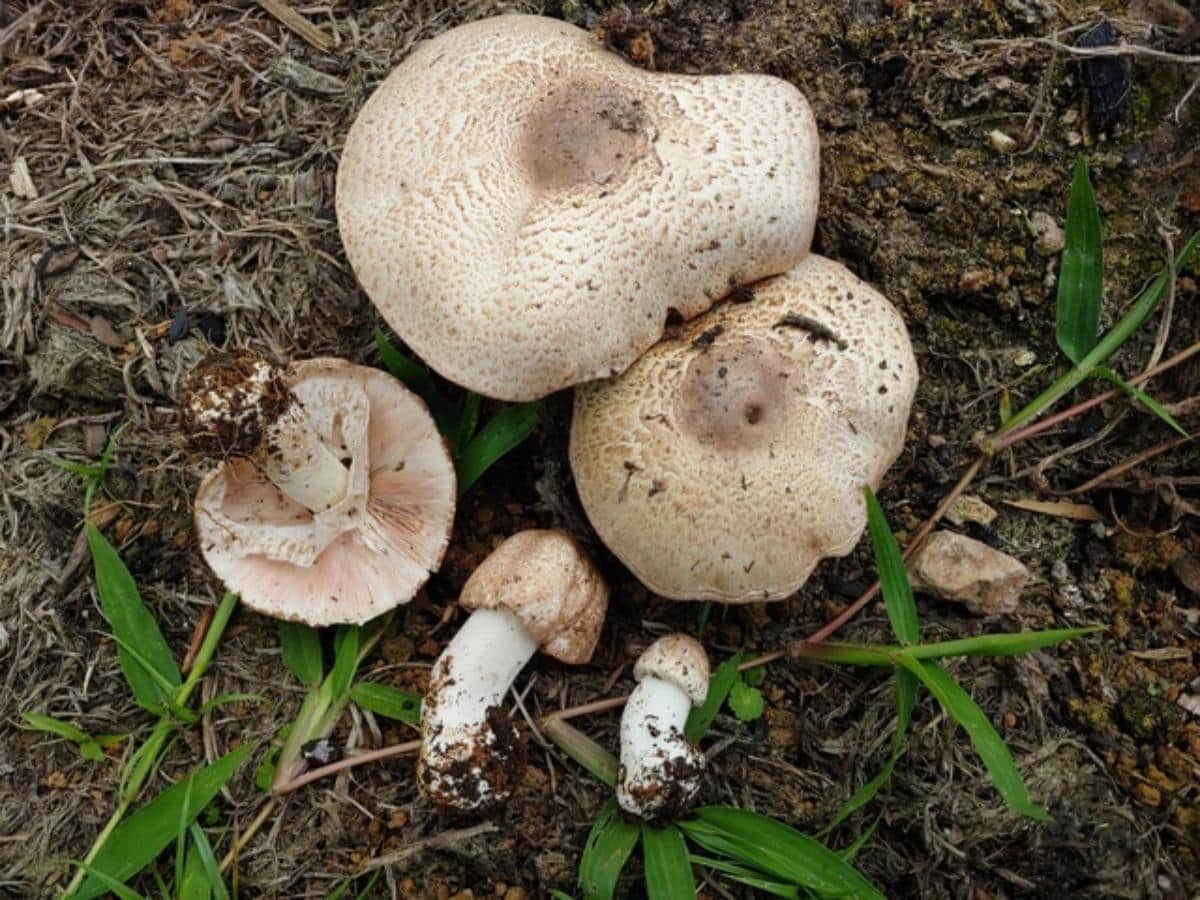
Agaricus perobscurus – The Princess
This smaller version of the prince only occurs in the San Francisco Bay Area (that we know of). The princess’s cap is darker brown, and it appears in mid to late winter. It smells more like anise than almonds but is easily confused. The princess grows with conifers and hardwoods, with a preference for Monterey Cypress, Monterey Pine, and eucalyptus.
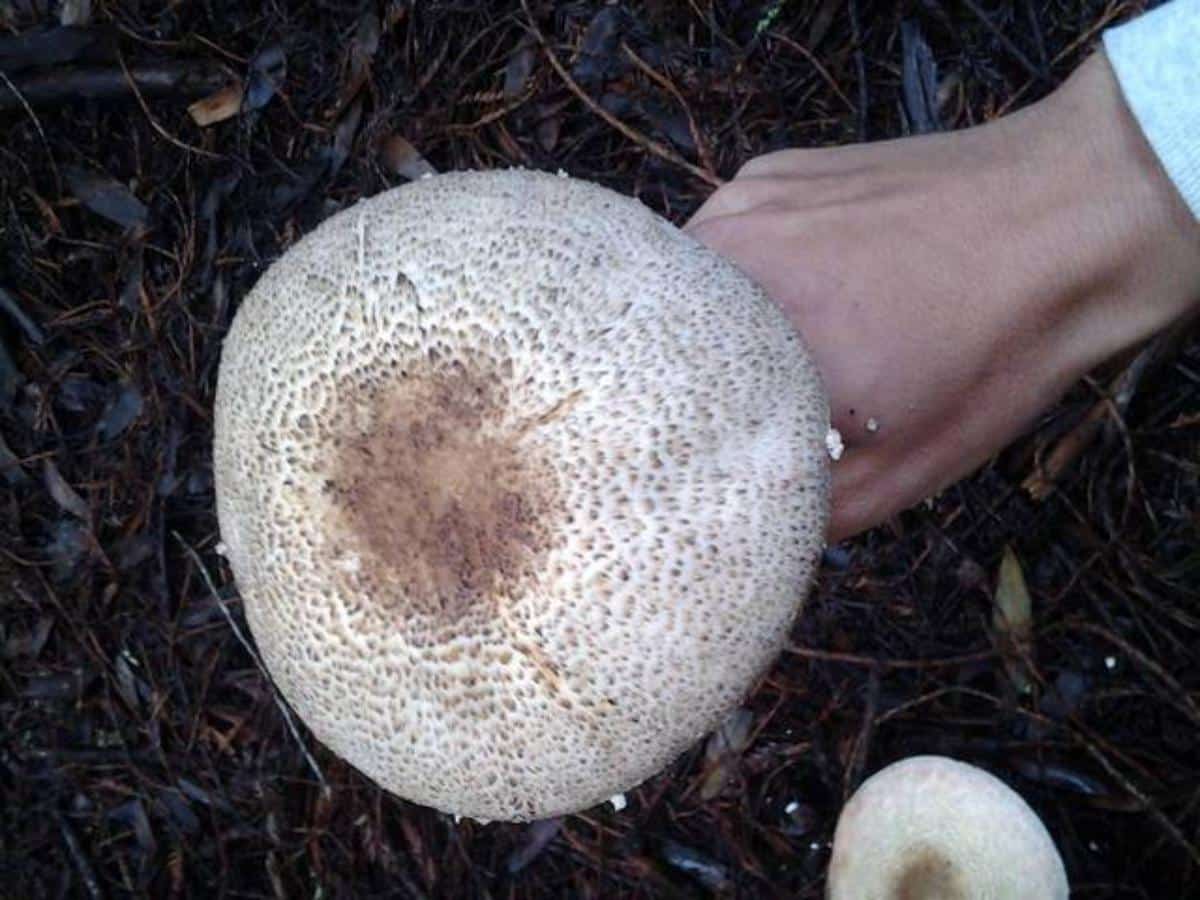
Lookalikes
When you’re dealing with mushrooms that look similar to the prince, always remember that princes have a tell-tale scent. Smell every mushroom. This is a great mushroom foraging habit to get into with all species, not just Agaricus mushrooms.
Agaricus species are notoriously difficult to differentiate. Take extra time with this species to ensure it is the prince you are foraging or one of its edible sister species.
Agaricus moeller
Usually, A. moeller fruits later than the prince agaricus, but sometimes simultaneously and even side by side. Remember to smell the mushrooms. The prince will smell like almond, while A. moeller smells phenolic – smoky, tar-like, and sweet.
A. moeller is also grayer looking – its scales are grayish-black or grayish-white. The prince’s cap scales are yellow-brown towards reddish-brown and generally much more bright-looking.
This species isn’t deadly poisonous, but it will probably give you some unpleasant digestive issues. Some people can eat it without issue, but we definitely don’t recommend it.
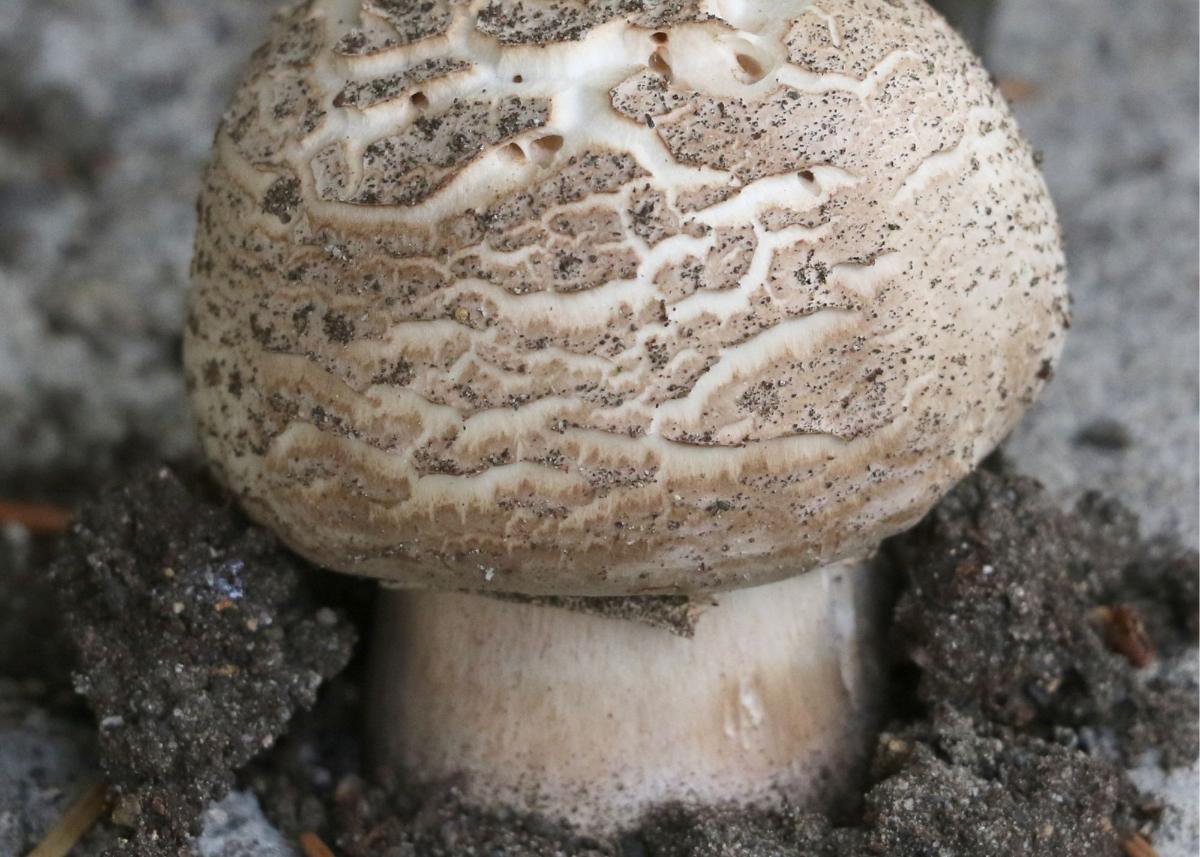
Agaricus arvensis – The Horse Mushroom
This Agaricus species is easy to differentiate from the prince, but we include it because it is very common. It is much more likely you will encounter the horse mushroom than the prince. It is edible too, so there isn’t the worry of poisoning.
The horse mushroom has a smooth, white cap that stains yellow, especially in young specimens. It smells like anise and grows around horse stables, pastures, and meadows from summer through late fall.
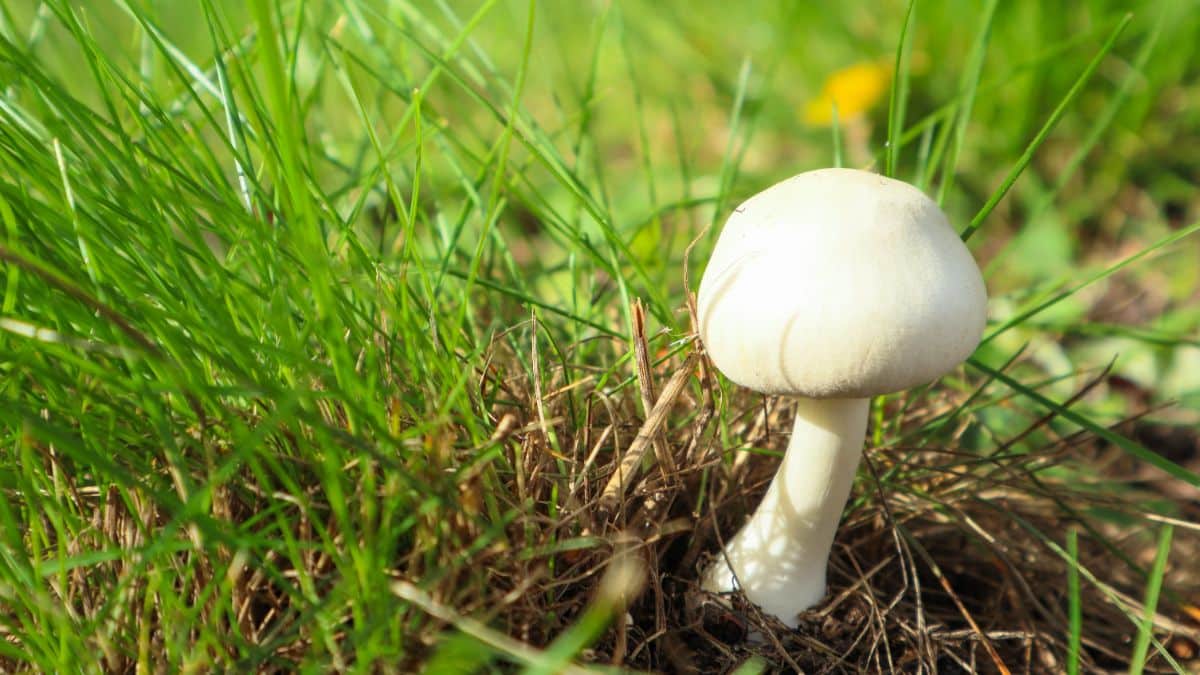
Agaricus campestris – The Meadow Mushroom
Another easily distinguishable but more common species, the meadow mushroom looks vaguely similar to the prince agaricus. It has a white cap, like the horse mushroom, and grows in meadows, lawns, and pastures. The meadow mushroom grows on almost every continent and is an excellent edible mushroom.
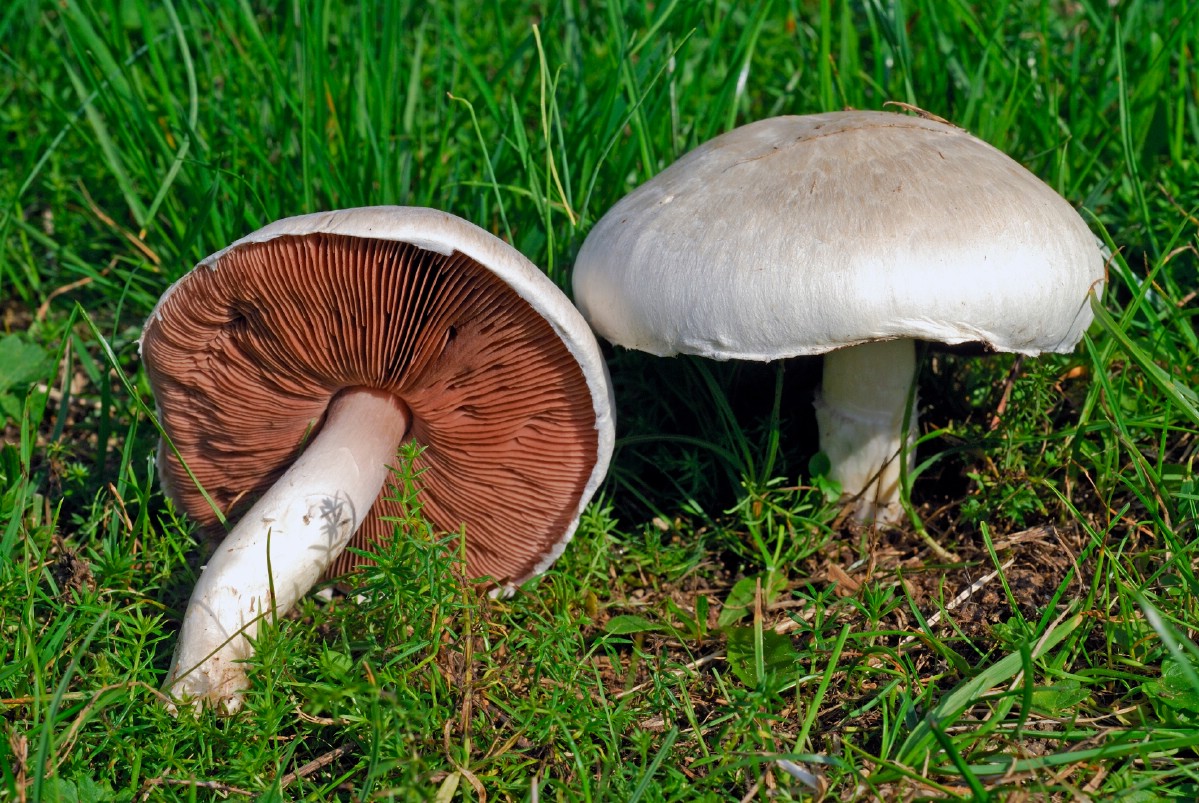
Prince Agaricus History
The prince’s name, Agaricus augustus, is likely derived from the month it is most often found – August (in Europe). It was named by the Swedish biologist Elias Fries in 1838. The word august also means noble, majestic, grand, and imposing, which may also be why it was named this. It is quite a majestic-looking mushroom!
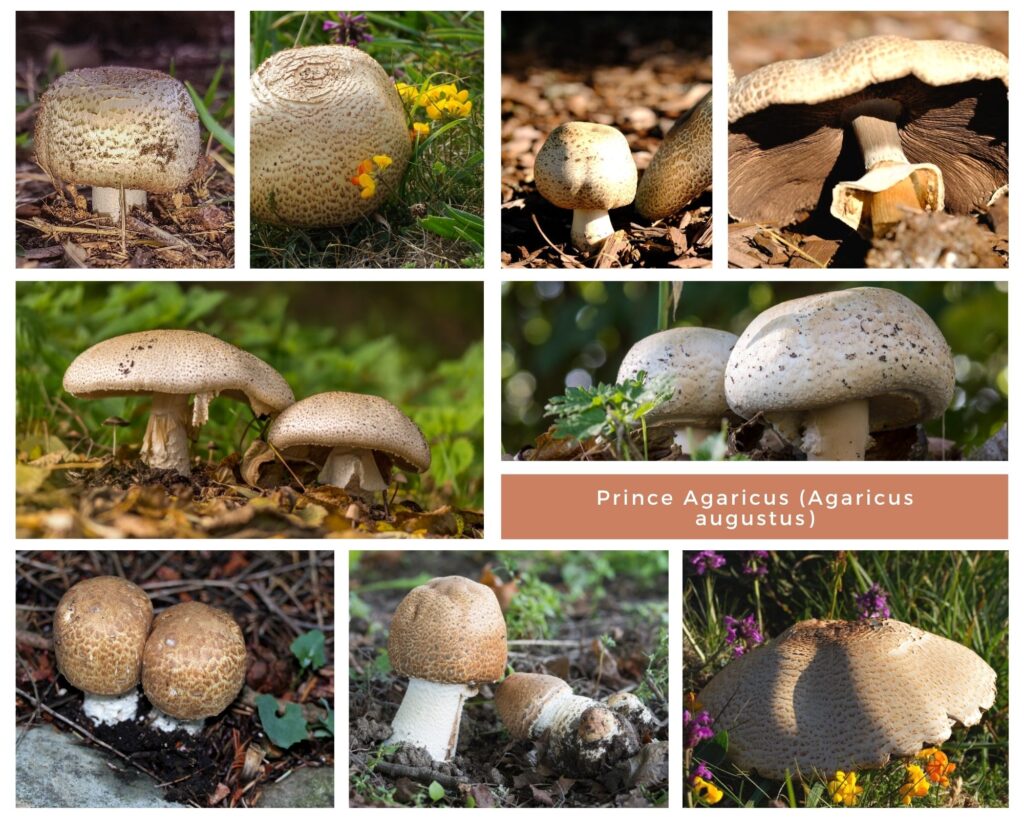






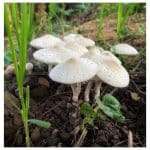
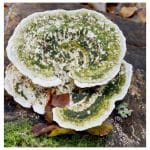
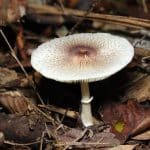
Leave a Reply